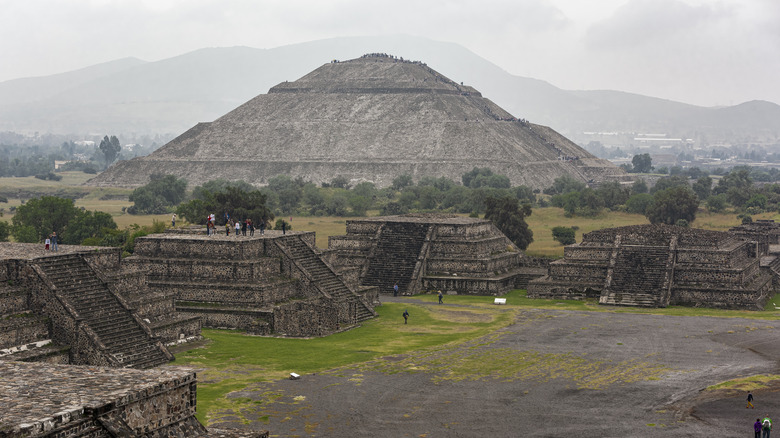This Island City Is An Under-The-Radar Vacation Destination Known As 'Mexico's Venice'
Mexcaltitán, a tiny, artificial island located 73 miles north of San Blas in the Mexican state of Nayarit and five hours drive from the famed beaches of Puerto Vallarta, is shrouded in profound mystery and intrigue. Because of its unique canal system, it's known by the locals as Mexico's Venice. Some archeologists even think it may be connected to the Aztec civilization and the migration that led to the founding of the Aztec capital— Tenochtitlan, located in what is now Mexico City.
Mexcaltitán earned its iconic nickname largely because of the heavy floods that often arrive during the rainy season, making travel through the town impossible on foot. The roads become so saturated with rain that they temporarily become canals. Because of the size of the island and repeated flooding during the summertime, there are virtually no cars, making canoes the primary source of transportation around town. The island is so tiny that its widest point measures only 1,312 feet, just short of a quarter of a mile. Because of this island's unique history and geography, a trip to Mexcaltitán makes a great adventure. And while you are planning your magical Mexico trip, why not consider visiting some of its safest destinations for a stress-free vacation?
Mexcaltitán and its links to the Aztecs
It may be hard to believe, but Mexcaltitán's origins might go back to the reign of the famous Aztecs. In an Al Jazeera English report, experts explained that the island's design is very similar to the original layout of the Aztec capital, Tenochtitlan, with its roads arranged toward four cardinal points. Although not as famous as Tenochtitlan, Mexcaltitán is considered a secret sister spot, much like Choquequirao is to Machu Picchu.
According to local legend, Mexcaltitán may even be the fabled island of Aztlán, the island where the Aztecs (otherwise known as the Mexicas) originated. However, there is heavy debate surrounding this claim, as very little evidence exists to back it up. In the Al Jazeera English report, archeologist Jose Beltran said, "[Mexcaltitán] is a symbol of great regional migration; it could have been a center, but it is not more than a symbol." Still, many are attracted to the mystique and magic the island seems to emanate, making it a prime destination for those who want to learn more about Mexico's pre-Columbian history.
Mexcaltitán's unique cuisine and culture
Shrimp fishing accounts for most of the small island's economy and is at its peak from May to August. Because of this heavy reliance on shrimp, local restaurants mainly offer various delicious dishes based around the catch, including shrimp tamales, shrimp ceviche, shrimp empanadas, and dry shrimp. If you like shrimp, you are in for a good time. The locals are also known to make unique crafts out of mangroves, barcinas, palm leaves, and manta cloth, all making excellent souvenirs for curious visitors.
For a more in-depth journey into the history of Mexcaltitán, you can also visit the El Origen Museum in the center of town, which was built in 1815. There, you can gain a deeper appreciation of Meso-American culture and see beautiful historical archeological clay pieces of animals, warriors, ball players, and pregnant women from past times. The more than 5,000 pieces displayed in this rustic historic museum show how Indigenous people lived and may give you a new appreciation for Aztec culture. And if you are already traveling to Nayarit and looking to let your hair down, why not party at this low-key beach located not too far away?


